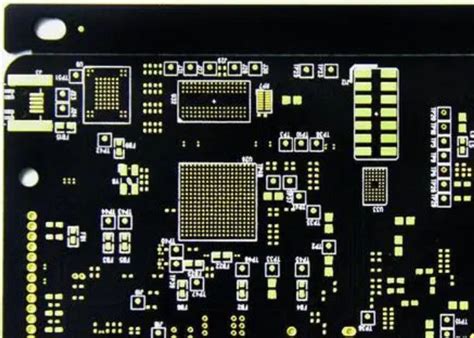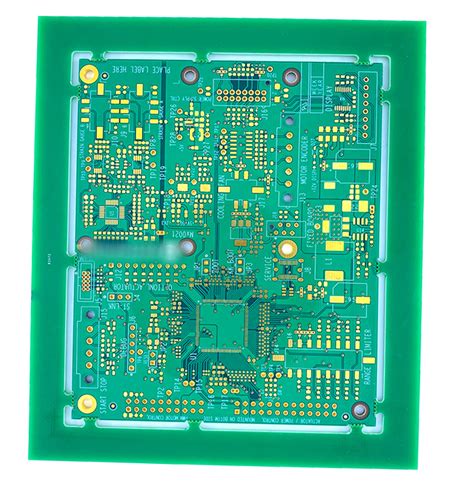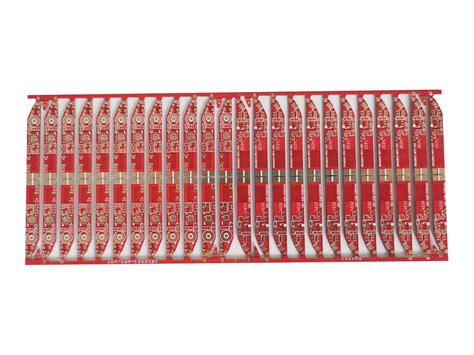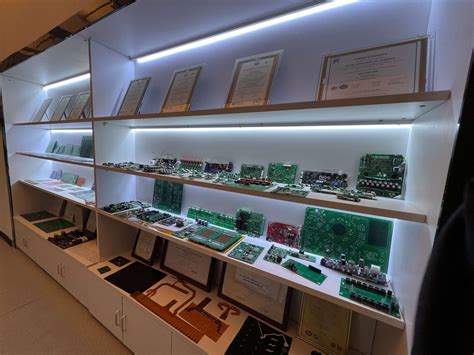Mastering Double Sided PCB Soldering Techniques for Success

Key Takeaways
Successfully mastering double sided PCB soldering is crucial for anyone involved in pcb assembly. A key takeaway is the importance of thorough preparation, which sets the foundation for achieving optimal results. Skilled practitioners should understand that the process of soldering both sides of a PCB requires strategic planning and attention to detail. This involves selecting the right components that fit into a pcba design without overcrowding, ensuring adequate space for soldering tools and techniques.
Another vital point is to maintain clear communication between layers during the assembly phase. Use of appropriate solder paste and techniques such as reflow, hand soldering, or wave soldering can significantly enhance the quality of joints. Troubleshooting common issues, such as cold solder joints or bridging, becomes easier with a solid understanding of these essential elements.
Moreover, adhering to best practices during double sided PCB assembly not only streamlines the process but also contributes to long-term reliability of electronic devices. Incorporating safety measures while handling tools and materials cannot be emphasized enough as it protects both the worker and the integrity of the project.
In essence, advancing your skills in double sided PCB soldering opens the door to producing superior, reliable circuit boards that can withstand market demands while providing robust performance.

Introduction to Double Sided PCB Soldering
Double sided PCB soldering is a sophisticated technique that plays a crucial role in the world of PCB assembly. Unlike single-sided designs, double sided PCBA allows components to be mounted on both sides of the board, increasing the circuit’s density and functionality. Mastering this technique is essential for achieving optimal performance in electronic devices, as it enables more complex circuit designs within a smaller footprint.
When approaching double sided soldering, it is important to understand the unique challenges it presents. One significant aspect is ensuring that the solder joints are reliable on both sides of the board. This involves strategic planning during the PCB assembly process, such as determining which components will be placed on each side and how they will be interconnected. By utilizing effective methodologies and maintaining attention to detail, one can enhance both efficiency and precision in soldering.
The use of appropriate tools becomes a fundamental factor in achieving success with double sided PCB assembly. Tools such as soldering irons with adjustable temperatures, proper solder types, and flux are crucial for creating strong bonds without damaging sensitive components. Additionally, leveraging techniques like through-hole plating and surface mount technology can further improve outcomes.
In conclusion, understanding the intricacies of double sided PCB soldering not only enhances individual skills but also contributes significantly to creating high-quality PCBA. By recognizing these techniques and considerations, electronic enthusiasts can foster a foundation for innovation and excellence in their projects.
Essential Tools and Materials for Soldering
To achieve success in double sided PCB soldering, having the right tools and materials is crucial. One of the primary tools you’ll need is a high-quality soldering iron. This device should ideally have adjustable temperature settings, allowing for precise control, which is especially important when working with pcba that may have sensitive components. Additionally, you will require solder wire, typically made of a tin-lead or lead-free alloy, depending on your project requirements. The diameter of the wire should match the size of the pads on your PCB for optimal results.
Moreover, a good set of soldering flux is essential. Flux helps to clean surfaces and improve solder flow, reducing the chances of cold joints or bridging during assembly. A well-equipped workstation should also include desoldering tools, such as desoldering pumps and wick, allowing for corrections in case mistakes occur during soldering.
In terms of materials, consider using a sturdy double sided PCB that can withstand multiple soldering processes without damage. Furthermore, don’t overlook components such as capacitors, resistors, and integrated circuits (ICs), which form the crux of any functional pcb assembly. Achieving proficiency in using these tools and understanding these materials will set a solid foundation for mastering double sided PCB soldering techniques and ensure that your projects meet performance expectations.

Preparing Your PCB for Successful Soldering
To achieve mastery in double sided PCB soldering, careful preparation of your PCB assembly is crucial. Before you begin, ensure that the PCB is clean and free from any dust or oils that could hinder the quality of the solder joints. A clean surface promotes better adhesion and reduces the risk of defects in your soldering process. Additionally, it’s important to check that all components are properly aligned and securely placed on both sides of the PCB. Utilizing a fixture or a jig can assist in keeping components stable during soldering, which is particularly beneficial when working with densely populated boards.
Next, assess the layout for any potential PCBA challenges, such as conflicting components or ground planes that may affect heat distribution. To enhance your soldering accuracy, use high-quality solder and a suitable flux to ensure effective heat transfer and bonding. During this stage, having a steady hand and good visibility will aid in achieving those flawless solder joints that are essential for optimal circuit performance. Keeping these preparation techniques in mind can dramatically increase your success rate, setting a solid foundation for the subsequent stages of your double sided PCB assembly.
Techniques for Achieving Flawless Solder Joints
Achieving flawless solder joints in double sided PCB soldering requires a combination of skill, precision, and the right techniques. One crucial technique is to ensure that your soldering iron is at the correct temperature; too hot can damage the PCB assembly, while too low can lead to insufficient melting of the solder. For optimal results, utilize a well-tinned soldering iron tip and make sure it maintains good thermal contact with the joint being soldered.
When dealing with double sided PCBs, it’s vital to apply solder from both sides strategically. Start with the side containing the most complex components, allowing you to work more freely on the reverse side later. Employ a technique called "tack soldering," where a minimal amount of solder is applied initially to hold a component in place while you complete your work around it, ensuring that components remain properly aligned during the entire process.
"Always inspect each joint as you go. A minute deviation can lead to significant performance issues in your final product."
Balancing the amount of solder used is essential — each joint should have enough material to establish a good electrical connection while avoiding excessive build-up that can cause short circuits or make assembly of other components difficult. Consider applying flux before soldering; it aids in creating better bonds and prevents oxidation during heating.
Furthermore, employing patience is key; if you rush through this step, you may compromise quality. After completing your joints, ensure proper inspection closely examining them for any cold joints or excess solder, which can affect performance and reliability in assembly for long-term use. Implement these techniques consistently for excellence in pcba quality and longevity in your projects.
Troubleshooting Common Soldering Issues
When engaging in double sided PCB soldering, it is essential to be aware of common challenges that may arise during the pcba process. One prevalent issue is the formation of cold joints, which occur when solder does not melt correctly. This can typically be corrected by ensuring that the soldering iron is adequately heated and making firm contact with both the pad and component lead to facilitate proper melting. Furthermore, bridging—where excess solder creates unintended connections between traces—can impede circuit functionality. To prevent this, using appropriate amounts of solder and maintaining clean components can help ensure clear lanes for current flow.
Another frequent concern is lifted pads, which may happen when excessive heat or force is applied during soldering. If you encounter a lifted pad, it is crucial to repair it promptly using a small wire or adhesive copper pad for connection. Also, ensuring a clean surface before starting your pcb assembly process aids in better adhesion and overall joint quality. Recognizing these potential pitfalls allows for improved strategies in achieving reliable results during double sided PCB soldering. Implementing these solutions not only enhances your skills but also contributes to achieving optimal circuit performance in your next pcba project.
Best Practices for Double Sided PCB Assembly
Successful pcb assembly involves adhering to a set of best practices designed to ensure both efficiency and quality throughout the soldering process. One of the fundamental aspects is to ensure that your workspace is organized and free from clutter, as this minimizes the risk of misplaced components or tools during assembly. Before beginning, verify that all necessary components are on hand and properly labeled; this will streamline your workflow significantly.
Moreover, it’s crucial to pay attention to the layout of the pcba. Ensure that parts with lower thermal mass—like small resistors—are placed in a manner that facilitates heat distribution during soldering. When applying solder, utilize techniques such as drag soldering for larger components and spot soldering for smaller ones; these methods can improve your joint quality significantly.
Additionally, consider implementing a preheating phase when working with double-sided designs; this helps reduce thermal shock and improves overall solder flow. After completing the assembly, it’s equally important to conduct thorough inspections. Use tools like a magnifying glass or microscope to check for incomplete joints or solder bridging; addressing these issues promptly will enhance the reliability of your pcb assembly. Adhering to these practices can lead you toward achieving optimal circuit performance through reliable and effective double-sided PCB soldering techniques.
Safety Measures and Precautions in Soldering
When engaging in double sided PCB soldering, prioritizing safety is essential to ensure not only the quality of your work but also your well-being. Firstly, always wear appropriate personal protective equipment (PPE), including safety goggles and heat-resistant gloves. This will protect your eyes from potential solder splashes and your hands from burns. It is also crucial to solder in a well-ventilated area. The fumes generated during pcb assembly can be harmful if inhaled, therefore using a fume extractor or soldering under a vent hood can significantly mitigate health risks.
Additionally, keep your workspace organized and free from contaminants. Maintaining a clutter-free environment will help prevent accidents and ensure that you can locate your tools quickly when needed. It is also advisable to check electrical connections before powering on the PCB; this helps to avoid shorts that could damage components or create fire hazards during the pcba process. Using proper techniques when handling hot tools is another important safety measure—always set down soldering irons in designated stands and avoid placing them on surfaces that could be damaged by heat.
Finally, be mindful of the components you are working with; some may be sensitive to excessive heat or electrostatic discharge (ESD). Utilizing ESD safe wrist straps can help protect sensitive components during the double sided PCB assembly process. By following these guidelines, you not only enhance the outcome of your soldering projects but also create a safer working environment overall.
Conclusion: Mastery in Double Sided PCB Soldering
Achieving mastery in double sided PCB soldering is an essential skill for anyone involved in PCB assembly or PCBA. The complexity of handling components on both sides of the board demands a solid understanding of various soldering techniques and a meticulous approach to preparation and execution. Throughout this article, we’ve explored the fundamental tools necessary for effective soldering and examined best practices that can significantly reduce the likelihood of defects. This mastery requires not only technical skills but also an awareness of potential challenges that may arise during the process. By staying informed about troubleshooting methods and adhering to safety precautions, soldering professionals can enhance their proficiency, ensuring that each joint is reliable and every circuit functions optimally. The journey toward becoming an expert in double sided PCB soldering is ongoing, marked by practice, learning from mistakes, and continuously refining your process. Embrace these principles as you strive for excellence in your PCBA projects.

Conclusion: Mastery in Double Sided PCB Soldering
Achieving mastery in double sided PCB soldering is essential for anyone involved in PCB assembly or the broader field of electronics manufacturing. The intricate process of soldering components on both sides of a printed circuit board (PCB) demands precision, patience, and a solid understanding of techniques tailored for this complex task. To excel in PCBA, it’s crucial to prioritize the use of high-quality materials and meticulously prepare the board before initiating the soldering process. As you refine your skills, focus on achieving flawless solder joints, as these connections play a vital role in the overall performance and reliability of the circuit.
One must pay attention to factors like heat control and proper alignment, which are pivotal in preventing common issues such as cold solder joints or bridges. By adopting best practices—ranging from appropriate solder type and quantity to effective inspection methods—you will significantly improve your outcomes. Moreover, fostering a safe working environment through established safety measures ensures that you can practice these skills effectively without compromising your well-being.
As you continue to learn and apply different techniques, remember that mastery is not just about achieving perfect results but also about understanding the nuances of double sided PCB assembly. Each project will enhance your knowledge base, equipping you with valuable experience that can lead to innovations and efficiencies in future endeavors. Thus, dedication to honing your skills in this challenging yet rewarding field is essential for long-term success in electronics development.
FAQs
What is double sided PCB soldering?
Double sided PCB soldering refers to the process of soldering components on both sides of a Printed Circuit Board (PCB). This technique is essential for creating more compact and efficient PCB assembly (PCBA) solutions as it allows for a greater number of components to be fitted onto the board.
Why is double sided soldering important?
Double sided soldering is important because it maximizes space utilization on the circuit board. This is especially beneficial in modern electronics where real estate on the PCB can be limited. By increasing the density of components, manufacturers can produce smaller and more powerful devices.
What tools are necessary for double sided PCB soldering?
Essential tools for double sided soldering include a soldering iron, desoldering pump, tweezers, flux, and quality solder wire. These tools ensure that you achieve optimal results when creating your PCBA.
How do I prepare my PCB for double sided soldering?
Preparation involves ensuring that the board is clean and free from any debris or oxidation. You should also apply a suitable amount of flux to both sides of the PCB to facilitate effective heat transfer and aid in creating strong, reliable joints.
What are some common issues in double sided soldering?
Common issues include cold joints, bridging between pads, and components not securely attached. Recognizing these problems early allows you to take remedial actions to ensure the integrity of your PCB assembly.
Are there safety tips I should follow while soldering?
Yes, safety measures include wearing safety goggles to protect your eyes from fumes or splatters, using an anti-static wrist strap while working with sensitive components, and ensuring proper ventilation when working with fluxes and solders that may emit harmful fumes.







